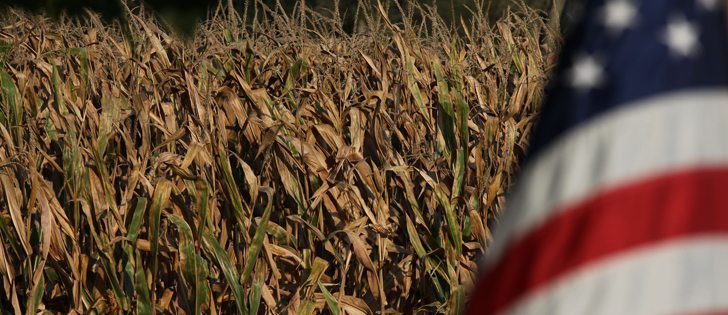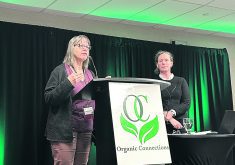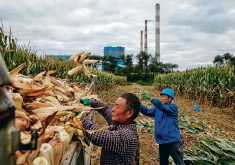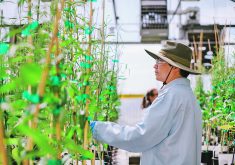If humans want fewer forests, more expensive food and more greenhouse gases, banning genetically modified crops is a good place to start, says a Purdue University economist.
A Purdue study, soon to be published in AgBioForum states that growing GM corn, soybeans and cotton reduces the amount of land needed to grow crops in the U.S., thus reducing greenhouse gas emissions from agricultural land.
“Some of the same groups that oppose GMOs (also) want… to reduce the potential for global warming,” said Wally Tyner, a Purdue agricultural economist
Read Also

Farming Smarter receives financial boost from Alberta government for potato research
Farming Smarter near Lethbridge got a boost to its research equipment, thanks to the Alberta government’s increase in funding for research associations.
“The result we get is that you can’t have it both ways. If you want to reduce greenhouse gas emissions in agriculture an important tool to do that is with GMO traits.”
Tyner and his colleagues used a computer model to reach their conclusion. The model makes connections between agriculture, energy, economics and the environment. If a policy or practice changes in one of the sectors, the model estimates the broader implications in the other realms.
The scientists used U.S Department of Agriculture data and other published research to gauge the yield benefits of GM crops. Without GM varieties they estimated that U.S. corn yields would be 11.2 percent lower, soybeans 5.2 percent down and cotton 18.6 percent.
“The estimates we got from the literature basically compared what’s the yield of a GMO variety and what’s the yield of a non-GMO variety in the same area,” Tyner said. “We translated that into what we called negative shocks…. You run the model with those shocks applied and you see what happens.”
One of the consequences would be land use changes. Forests and grasslands in the U.S. would be cultivated to compensate for the lower output, increasing the greenhouse gas released from that land.
“The extent of greenhouse gas emissions did surprise me,” Tyner said. “The greenhouse gases from losing GMOs turned out to be larger than (land use changes from) the whole U.S. ethanol program…. Depending on the case we ran (it could be) twice as large.”
The study concluded that farmers would receive some benefits if GM technology were prohibited. Corn prices would rise 28 percent and soybeans would jump by 22 percent.
Consumers wouldn’t be as happy. Food prices would rise one to two percent, equal to $14 to $24 billion annually in the U.S.
The Purdue economists plan to repeat the study to analyze the global implications of a world without GM crops, but they already have a sense of the outcome.
“If in the future we ban GMOs at the global scale, we lose lots of potential yield,” said Farzad Taheripour, another Purdue economist. “If more countries adopt GMOs their yields will be much higher.”
Contact robert.arnason@producer.com


















